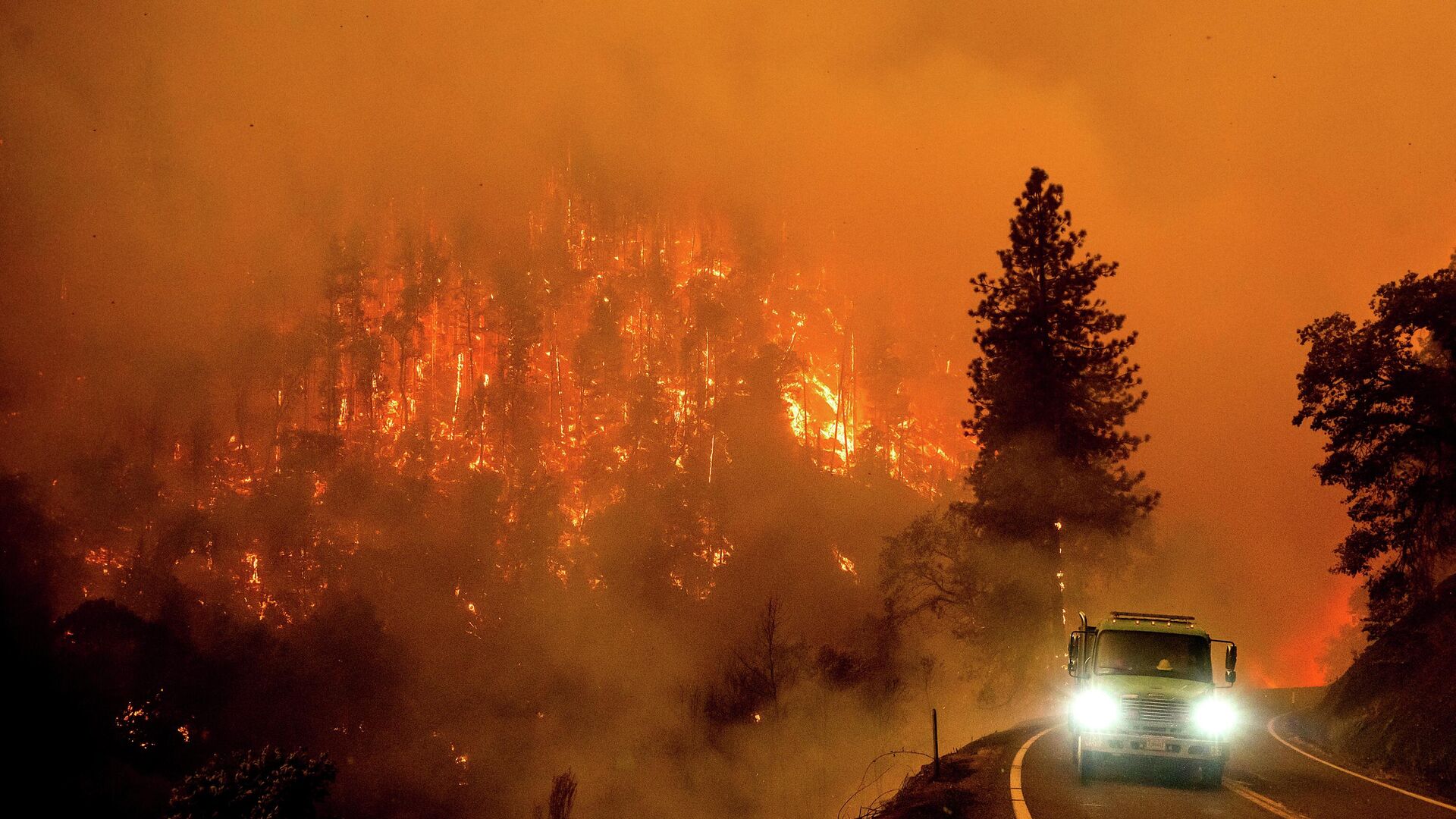Videos: Massive California Wildfire Doubles in Size Overnight as Oregonians Grow Anxious Over Blaze

© AP Photo / Noah Berger
Subscribe
With weather conditions turning Northern California into a tinderbox, the McKinney blaze has quickly become California’s biggest wildfire of the year–and it shows no signs of slowing down anytime soon.
An uncontrolled wildfire currently raging in Northern California has exploded in size, with the US Forest Service reporting 0% containment as the inferno reached 51,468 acres by Sunday morning.
Footage from Pilot Witham this morning above the #McKinneyFire that has grown to nearly 30,000 acres as of 11:45am today, burning on the Klamath National Forest just West of #Yreka. pic.twitter.com/R0sBRspvTZ
— NorCal Air Operations (@NorcalAirOps) July 30, 2022
Fueled by temperatures well over 100 degrees Fahrenheit, single-digit relative humidity, and gusts that have reached up to 60 miles per hour, the McKinney fire grew from 800 acres in Klamath National Forest on Friday night to a staggering 18,000 acres by Saturday afternoon. It then doubled in size overnight and was declared California’s biggest fire of the year on Sunday.
Now it seems it’s gotten so big, it may have taken on a life of its own. Time-lapse footage uploaded to Twitter shows heavy lightning strikes in the area after the smoke generated a huge pyrocumulonimbus cloud which one climate scientist estimated reached a height of nearly 10 miles.
Wild timelapse footage of #McKinneyFire from last night. Similarly extreme fire behavior is being observed tonight, with yet more fire-generated thunderstorm activity. #CAwx #CAfire https://t.co/jaHPl6ku4j
— Daniel Swain (@Weather_West) July 31, 2022
At least 500 evacuation orders have been delivered in communities including Scott Bar, Klamath River and Horse Creek, according to the Siskiyou County Sheriff’s Office, and at least 100 homes have reportedly burned down already.
That total pales in comparison to what might happen if the blaze pushes just a few miles east to the city of Yreka, which has a population of around 8,000. A 19-year resident of the town reportedly told the Los Angeles Times that while there are “fires every year in the surrounding areas… here in Yreka this is the first time I have felt like it could possibly threaten the town.”
Meanwhile, the over 600 firefighters now working to battle the fire have struggled to contend with the scorching heat, and on Sunday, the US National Weather Service issued another excessive heat warning for “most of Siskiyou County in Northern California,” where the fire’s currently located.
Meanwhile, the over 600 firefighters now working to battle the fire have struggled to contend with the scorching heat, and on Sunday, the US National Weather Service issued another excessive heat warning for “most of Siskiyou County in Northern California,” where the fire’s currently located.
Crazy footage of firefighters escorting residents out of the McKinney fire last night. The fire pushed hard into the evening. Today, due to visibility, tankers have been diverted to the nearby China 2 fire. 🙏to a subscriber for this footage #mcKinneyfire #cali #fire #california pic.twitter.com/SDUQzncztM
— TheHotshotWakeUp: Podcast (@HotshotWake) July 30, 2022
As early as Saturday afternoon, smoke from the fire darkened the skies in southern Oregon cities like Medford, and on Sunday, Oregon’s Department of Environmental Quality issued an air quality advisory effective until August 5 for Jackson and Klamath Counties due to the health risks posed by the smoke.
With the totally uncontained blaze showing no signs of stopping just 15 miles from California’s northern border, there are serious fears it could threaten Oregonians more directly as well, and the Oregon State Fire Marshal’s office announced they’ll be assisting their colleagues in California with firefighters, engines and water tenders in the fight to keep the blaze from spreading.
